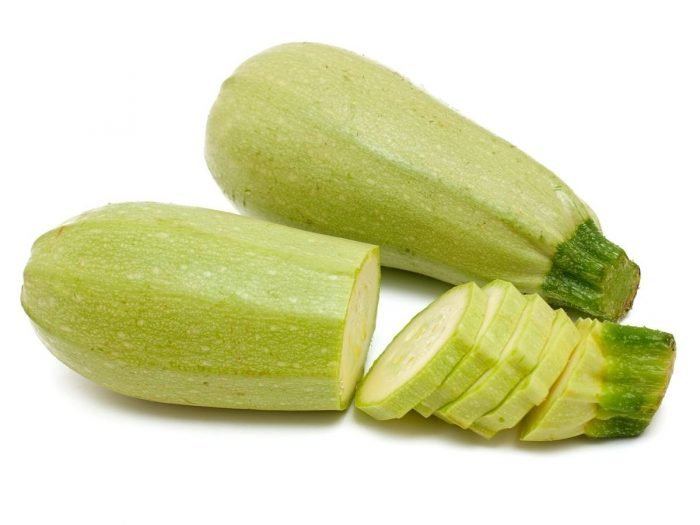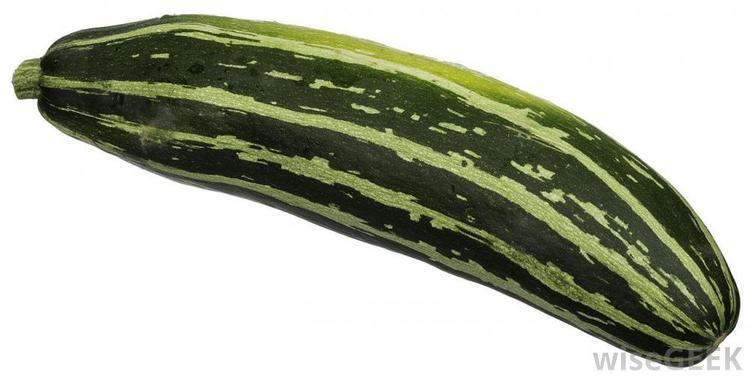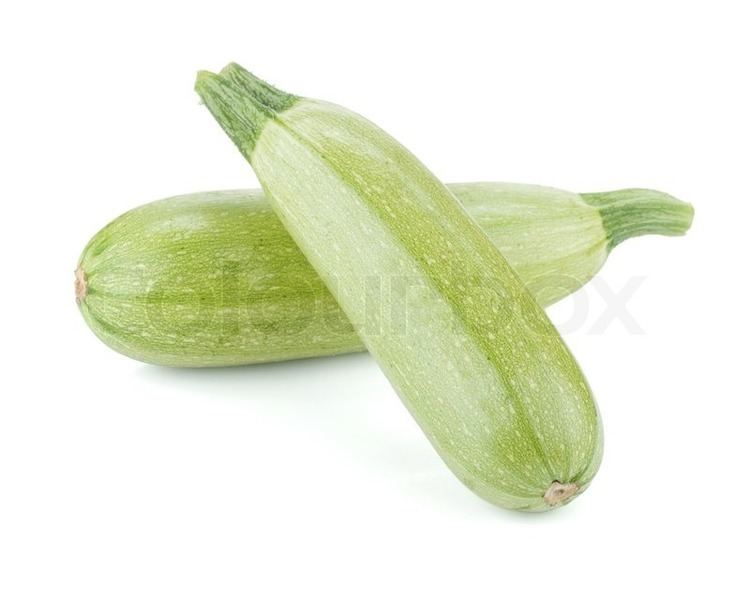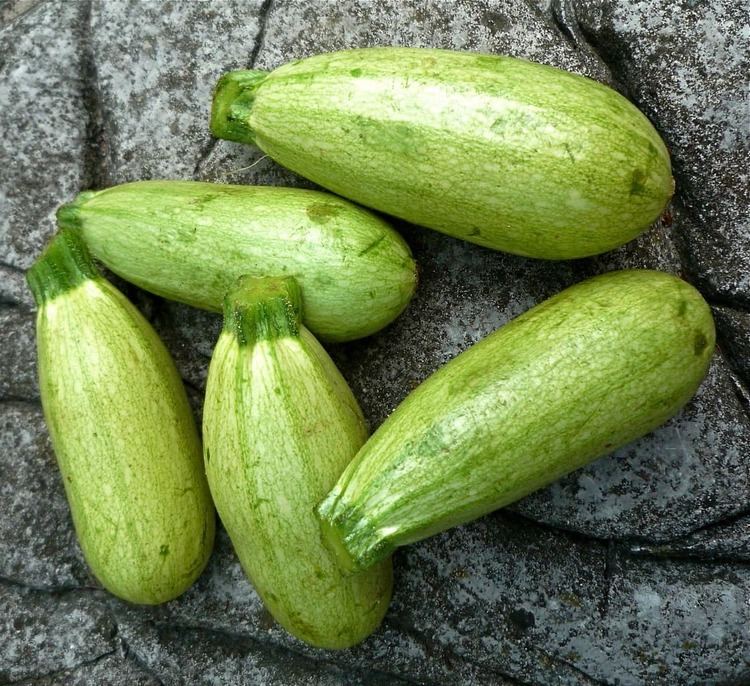 | ||
Similar Zucchini, Stuffed squash, Bone marrow, Pattypan squash, Summer squash | ||
A marrow is a vegetable, the mature fruit of certain Cucurbita pepo cultivars. The immature fruit of the same or similar cultivars is called courgette (in Britain, Ireland, the Netherlands and New Zealand) or zucchini (in North America, Australia, Germany and Austria). Like courgettes, marrows are oblong, green squash, but marrows have a firm rind and a neutral flavour ("overgrown when picked and insipid when cooked..."), making them useful as edible casings for mincemeat and other stuffings. They can be stored for several weeks after harvest (like pumpkins and other winter squash), to be processed for food when required. They are a popular vegetable in Great Britain and areas with significant British influence, though their popularity is waning in favor of immature summer squash like courgette.
Contents

Giant marrows are grown competitively in the United Kingdom where the term "marrow" is often restricted to the striped, thick-skinned cultivar.

In a culinary context, marrows are treated as a vegetable; usually cooked and presented as a savory dish or accompaniment. Botanically, marrows are fruit, a type of botanical berry, being the swollen ovary of the marrow flower. Marrows, like all squash, have their ancestry in the Americas.
History

According to the Oxford English Dictionary, the first mention of vegetable marrows dates to 1822, zucchini to 1929, and courgettes to 1931. Before the introduction of Cucurbita species from the New World, marrow signified the immature, edible fruits of Lagenaria, a cucurbit gourd of African origin widely grown since Antiquity for eating when immature and for drying as watertight receptacles when grown to maturity.

Marrows are commonly cultivated in the British Isles, and the term "marrow" for the plant and for the fruit is still current there, especially for the striped, thicker-skinned cultivar. However, both in North America (since the 1920s) and in Britain (since the 1960s), thinner-skinned immature marrows have gained popularity due to their tender skin, firmer texture and distinct flavour. Hedrick (1928) in his book The vegetables of New York p.50, describes the "English Vegetable Marrow" as "one of the earliest forms of marrow squash grown, but has never been exceedingly popular in this country".
The fashion for eating immature marrows, called in Britain "courgettes", is relatively recent in Britain. Sudell (1966) does not mention courgettes, although he has a section on "vegetable marrow", noting both trailing (vining) and bush types and saying "cut when young". Witham Fogg (1966) wrote "Courgettes These are really very tender baby marrows which have long been popular in France. ... Cooked and eaten with butter they form a very palatable dish." He devotes a page and a half to (vegetable) marrows and less than half a page to courgettes, which he clearly regards as something new to Britain.
Nutrition
Marrows, like zucchini, are low in food energy (approximately 71 kJ or 17 kcal per 100 g fresh marrow) and contain useful amounts of folate (24 μg/100 g), potassium (261 mg/100 g) and provitamin A (200 IU [10 RAE]/100 g).
Toxicology
Members of the plant family Cucurbitacea, which includes zucchini/marrows, pumpkins and cucumbers, can contain toxins called cucurbitacins. These are chemically classified as steroids; they defend the plants from predators, and have a bitter taste to humans. Cultivated cucurbitaceae are bred for low levels of the toxin and are safe to eat. However, ornamental pumpkins can have high levels of cucurbitacins, and such ornamental plants can cross-fertilise edible cucurbitaceae – any such cross-fertilised seeds used by the gardener for growing food in the following season can therefore potentially produce bitter and toxic fruit. Also, dry weather conditions/irregular watering can stress the plant and favour the production of the toxin. The toxin is not destroyed by cooking. People with an impaired sense of taste (particularly among the elderly) should therefore ask a younger person to taste the zucchini for them.
In August 2015, a 79-year-old German man and his wife ate a marrow grown by a neighbour. The couple noted the unusually bitter taste. Shortly afterwards they were both admitted to Heidenheim hospital, apparently with symptoms of a gastrointestinal infection. The wife, who had eaten a smaller portion, survived, while the man died. Toxicological analysis of the meal confirmed the presence of cucurbitacin.
